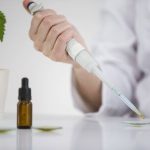1. Understanding Lip Fillers and Their Cost
Lip fillers have become a popular cosmetic treatment for those looking to enhance their lips shape, volume, and overall appearance. If youre considering getting lip fillers, its important to understand the different types available, their typical costs, and what factors influence pricing.
Types of Lip Fillers
There are several types of lip fillers on the market, with hyaluronic acid (HA) fillers being the most commonly used due to their natural look and reversible effects. Below is a comparison of some popular lip filler options:
| Filler Type | Main Ingredient | Longevity | Reversible? |
|---|---|---|---|
| Juvederm | Hyaluronic Acid | 6-12 months | Yes |
| Restylane | Hyaluronic Acid | 6-12 months | Yes |
| Belotero | Hyaluronic Acid | 6-9 months | Yes |
| Sculptra | Lactic Acid-Based | Over 2 years | No |
| Radiesse | Calcium Hydroxylapatite | Around 12-18 months | No |
The Cost of Lip Fillers
The cost of lip fillers varies based on the type of filler, the providers expertise, and geographic location. On average, here’s what you can expect to pay:
| Lip Filler Type | Average Cost per Syringe (USD) |
|---|---|
| Juvederm | $500 – $800 |
| Restylane | $400 – $700 |
| Belotero | $400 – $600 |
| Sculptra | $700 – $1,000+ |
| Radiesse | $600 – $900+ |
Main Factors That Influence Pricing
The final cost of your lip filler treatment depends on several factors, including:
- The Type of Filler Used: Premium brands or long-lasting fillers tend to cost more.
- The Injectors Expertise: Highly experienced providers may charge higher fees.
- Your Location: Prices tend to be higher in major cities compared to smaller towns.
- The Amount of Filler Needed:A single syringe may not be enough depending on your desired results.
- The Clinic’s Reputation:A well-known clinic with high ratings might have higher prices.
- Add-On Services:Numbing agents, follow-up appointments, or touch-ups can add to the total cost.
Savings Tips for Affordable Lip Fillers
If youre looking for affordable lip filler options, consider these tips:
- Loyalty Programs & Memberships:
- Bigger Packages:
- PROMOTIONS & SEASONAL DEALS:
- Avoid Bargain Deals:
Lip fillers can be an effective way to enhance your appearance without surgery. By understanding the different types available and what influences pricing, you’ll be better prepared to make an informed decision that fits your budget and beauty goals.
2. Preparing for Your Lip Filler Appointment
Getting ready for your lip filler appointment is just as important as the procedure itself. Proper preparation can help minimize side effects and ensure you get the best results. Here’s what you need to do before your appointment.
What to Avoid Before Your Appointment
Certain habits and substances can increase the risk of bruising, swelling, or complications. To ensure a smooth experience, avoid the following:
| What to Avoid | Why It Matters |
|---|---|
| Alcohol (24-48 hours before) | Can thin the blood and increase bruising. |
| Aspirin & NSAIDs (e.g., ibuprofen) | May increase bleeding and bruising. |
| Fish oil, Vitamin E, & Ginkgo Biloba | These supplements can also thin the blood. |
| Caffeine (on the day of treatment) | Might contribute to swelling and sensitivity. |
| Tanning or sun exposure | Irritated skin may react poorly to injections. |
How to Ensure the Best Results
A few simple steps can help enhance your results and make your recovery easier. Here’s what you should do:
- Stay Hydrated: Well-hydrated lips absorb fillers more evenly.
- Avoid Stress: Try to relax before your appointment to minimize tension and discomfort.
- Eat a Healthy Meal: Having a balanced meal beforehand can prevent lightheadedness during the procedure.
- Cleansed Skin: Arrive with clean lips—no lipstick, lip balm, or makeup.
- Tell Your Provider About Medications: Inform your injector if youre taking any prescription medications or have a history of cold sores.
The Day of Your Appointment: What to Expect
Your provider will likely apply a numbing cream to help reduce discomfort. The injection process typically takes about 15-30 minutes. You may experience mild swelling right away, but this is normal. Following these preparation steps can set you up for smoother healing and beautiful results!
![]()
3. What to Expect During the Procedure
Getting lip fillers is a quick and straightforward process, but knowing what to expect can help ease any anxiety. Here’s a step-by-step guide to what happens during the procedure.
Step 1: Numbing the Lips
Before the injections begin, your provider will apply a numbing cream or use a local anesthetic to minimize discomfort. This usually takes about 10–15 minutes to take full effect.
Step 2: Marking the Injection Sites
Your injector will carefully mark the areas where the filler will be placed. This ensures a balanced and natural-looking result.
Step 3: The Injection Process
Using a fine needle or cannula, the provider will inject small amounts of filler into specific areas of your lips. You may feel slight pressure or a pinching sensation, but it should not be overly painful.
How Long Does It Take?
| Procedure Step | Estimated Time |
|---|---|
| Numbing | 10–15 minutes |
| Marking & Preparation | 5 minutes |
| Injections | 15–30 minutes |
| Final Touch-ups & Massage | 5–10 minutes |
| Total Time | 30–60 minutes |
Step 4: Massaging & Checking Symmetry
After the injections, your provider may gently massage your lips to distribute the filler evenly and check for symmetry. They may also add small touch-ups if needed.
Step 5: Aftercare Instructions
Your injector will provide you with aftercare tips to minimize swelling and ensure the best results. This might include avoiding excessive lip movement, staying hydrated, and using ice packs if necessary.
Does It Hurt?
The level of discomfort varies from person to person. Most people describe it as mild stinging or pressure rather than pain. The numbing agents help make the experience more comfortable.
Immediate Effects & Swelling
Your lips will look fuller right away, but they may also appear slightly swollen. This is normal and should subside within a few days.
Understanding each step of the lip filler procedure can help you feel more confident when going in for your treatment. Next, we’ll discuss what happens after your appointment and how to care for your new lips!
4. Aftercare and Recovery Tips
Taking care of your lips after getting fillers is essential to ensure the best results. Proper aftercare can help reduce swelling, minimize bruising, and extend the longevity of your lip fillers. Here’s what you need to know.
How to Reduce Swelling
Swelling is a normal part of the healing process. It usually peaks within the first 24 to 48 hours and gradually subsides over the next few days. Here are some simple ways to reduce swelling:
- Apply a cold compress or ice pack wrapped in a cloth for 10-15 minutes at a time.
- Keep your head elevated when sleeping to prevent fluid buildup.
- Avoid excessive salt intake, as it can lead to water retention.
- Stay hydrated by drinking plenty of water.
Minimizing Bruising
Bruising is common after lip filler injections, but you can take steps to minimize it:
- Avoid alcohol and blood-thinning medications (like aspirin and ibuprofen) for at least 24 hours before and after treatment.
- Use arnica gel or supplements, which may help reduce bruising.
- Avoid strenuous exercise for at least 24-48 hours post-treatment.
- Be gentle with your lips—avoid massaging or pressing on them unnecessarily.
Dos and Donts After Lip Fillers
| Dos | Donts |
|---|---|
| Stay hydrated | Avoid touching or massaging your lips |
| Sleep with your head slightly elevated | Avoid hot drinks for the first 24 hours |
| Use ice packs for swelling | Avoid excessive sun exposure and tanning beds |
| Follow your provider’s aftercare instructions | Avoid strenuous workouts for at least 48 hours |
How to Make Your Lip Fillers Last Longer
Lip fillers are temporary, but there are ways to prolong their effects:
- Avoid smoking, as it can break down fillers more quickly.
- Mildly moisturize your lips with a hydrating lip balm.
- Sunscreen or SPF lip balm helps protect against UV damage that can degrade fillers.
- Avoid frequent lip biting or excessive puckering.
- Schedu le touch-up treatments as recommended by your injector.
When to Contact Your Provider
Mild swelling and bruising are normal, but if you experience severe pain, prolonged swelling, or signs of infection (such as redness, warmth, or pus), contact your provider immediately. They can assess any concerns and provide guidance on next steps.
5. How to Maintain Your Lip Filler Results
Getting lip fillers is just the first step—maintaining your results is key to keeping your lips looking plump and beautiful for as long as possible. Proper aftercare, scheduling touch-ups at the right time, and making healthy lifestyle choices can all impact how long your fillers last.
Post-Treatment Lip Care Tips
Right after your procedure, it’s important to follow a few simple steps to ensure proper healing and avoid unnecessary swelling or irritation. Here’s what you should do:
- Avoid Touching Your Lips: Refrain from massaging or pressing on them unless instructed by your provider.
- Stay Hydrated: Drinking plenty of water helps maintain skin elasticity and keeps fillers looking fresh.
- Avoid Strenuous Exercise: Intense workouts can increase blood flow and lead to additional swelling.
- Skip Alcohol & Caffeine: These can dehydrate your body and worsen swelling in the first 24–48 hours.
- Use Cold Compresses: Applying ice packs gently can help reduce swelling and discomfort.
When to Schedule Touch-Ups
Lip fillers are not permanent, so scheduling regular maintenance appointments ensures that your lips stay full and well-shaped. The timing of your touch-ups depends on the type of filler used and how quickly your body metabolizes it. Below is a general guideline:
| Filler Type | Expected Duration | Recommended Touch-Up Schedule |
|---|---|---|
| Hyaluronic Acid Fillers (e.g., Juvederm, Restylane) | 6–12 months | Every 6–9 months |
| Collagen-Based Fillers | Around 3–6 months | Every 3–5 months |
| Semi-Permanent Fillers (e.g., Bellafill) | Around 5 years | If needed, after a few years |
Lifestyle Factors That Affect Longevity
Your daily habits play a significant role in how long your lip fillers last. Making small adjustments can help extend their lifespan.
- Avoid Excessive Sun Exposure: UV rays break down hyaluronic acid faster, so always use SPF lip balm.
- No Smoking: Smoking accelerates collagen breakdown and can cause lip fillers to fade more quickly.
- Eats a Healthy Diet: Foods rich in vitamins and antioxidants support skin health and filler longevity.
- Avoid Frequent Lip Movements: Activities like excessive drinking through straws or biting your lips can wear down the filler faster.
- Keeps Stress Levels Low: High stress increases cortisol levels, which may affect how your body processes fillers.
The Bottom Line on Maintaining Lip Fillers
Taking care of your lips post-treatment, scheduling timely touch-ups, and maintaining a healthy lifestyle will help you get the most out of your lip fillers. By following these tips, you can enjoy long-lasting, beautiful results with minimal upkeep.


